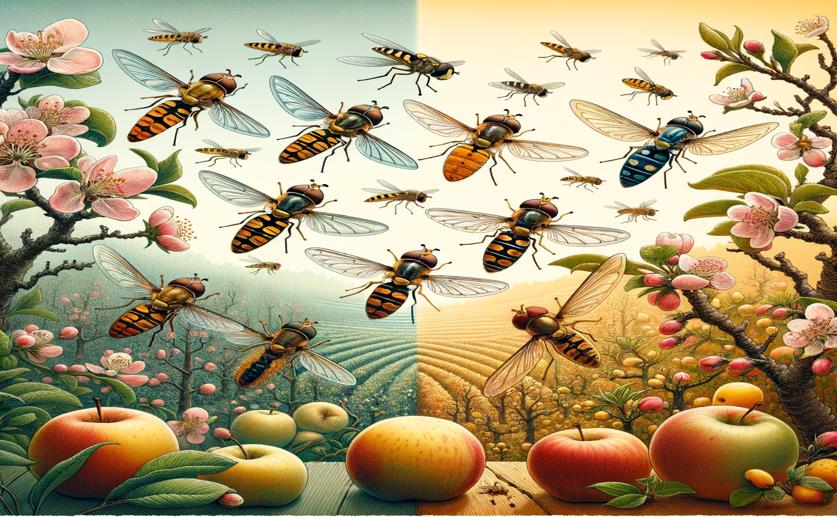
Seasonal Diversity of Hoverflies in Apple and Peach Orchards
Jenn Hoskins
24th May, 2024

Image Source: Natural Science News, 2024
Key Findings
- The study focused on hover flies in apple and peach orchards in North Georgia from March to October in 2020 and 2021
- Toxomerus geminatus and Toxomerus marginatus made up 86.6% of the hover flies collected
- Hover fly diversity and richness peaked post-bloom, while Toxomerus spp. abundance was highest during the bloom period
References
Main Study
1) Hover fly (Diptera: Syrphidae) diversity and seasonality in North Georgia apple and peach orchards.
Published 23rd May, 2024
https://doi.org/10.1093/jee/toae103
Related Studies
2) The effectiveness of flower strips and hedgerows on pest control, pollination services and crop yield: a quantitative synthesis.
3) Can Insectary Plants Enhance the Presence of Natural Enemies of the Green Peach Aphid (Hemiptera: Aphididae) in Mediterranean Peach Orchards?
4) Getting More Power from Your Flowers: Multi-Functional Flower Strips Enhance Pollinators and Pest Control Agents in Apple Orchards.



 26th January, 2024 | Mary Jones
26th January, 2024 | Mary Jones